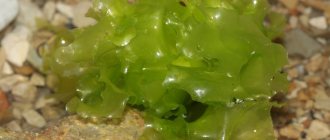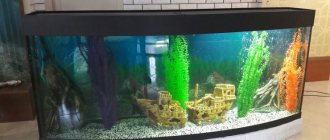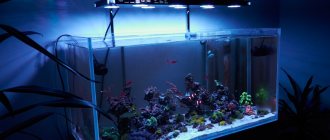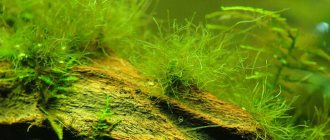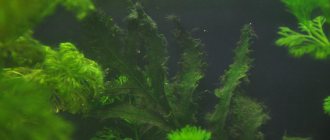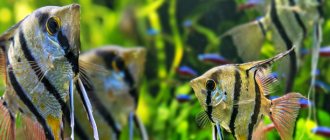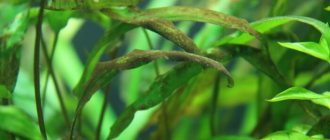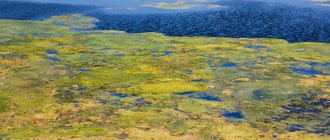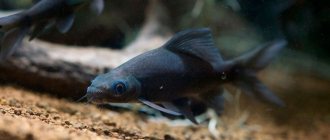What is seaweed and how is it beneficial for humans?
Algae are a group of primarily aquatic, single-celled or colonial photosynthetic organisms. Unlike higher plants, algae do not have stems, leaves, or roots; they form a protoplast. Contain a large range of useful substances.
The benefits of algae are known first-hand to adherents of alternative medicine. In particular, crushed or micronized algae are used in thalassotherapy: energy-rich substances penetrate the skin from the pulp, revitalizing metabolic processes and counteracting cellulite. In addition, the benefit of algae for humans is that they are rich in antioxidants: P-carotene, vitamins C and E, superoxide dismutase enzyme, microelements and are a source of essential fatty acids.
In total, there are more than 30 thousand species of seaweed - brown, green, red, blue-green and others. Treatment with seaweed is based on the fact that they contain large amounts of iodine, sea gum, plant mucus, chlorophyll, alginic acids, sodium salts, potassium, ammonium, and vitamins. Cosmetics mainly use extracts of brown algae - fucus, kelp, cystoseira. Speaking about the benefits of algae for humans, we must not forget that extracts obtained from individual types of algae differ in their composition and therefore have a targeted effect.
Shallow water plants of fresh water
Common calamus (Acorus calamus)
Three-leaf watch (Menyanthes trifoliata)
Swamp iris (Iris pseudacorus)
Marsh marigold (Caltha palustris)
Forget-me-not (Myosotis palustris)
Pontederia cordata
Cattail (Typha latifolia)
Juncus effusus
Common arrowhead (Sagittaria sagittifolia)
Umbrella squirrel (Butomus umbrellatus)
Southern reed (Phragmites australis)
Common ponytail (Hippuris vulgaris)
Water buttercup (Ranunculus aquatilis)
Swamp butterfly (Hottonia palustris)
Spica urut (Myriophyllum spicatu m)
Azolla
Wolfia
Vitamins in sea and freshwater algae
The content of vitamins A, B1 in freshwater and seaweed is especially high; B2, C, E and D. Algae also contains a lot of fucoxanthin, iodine and sulfoamino acids. The importance of algae in human life is that they are able to stimulate and regenerate skin cells, have a softening and mild bactericidal effect. In others, moisturizing and water-retaining properties are clearly manifested due to the higher content of polysaccharides, organic acids, and mineral salts. Third, due to the active influence of organic iodine, fucosterol, mineral salts and vitamins, they are effective against cellulite, acne, and are beneficial for the care of oily skin, since they provide regulation of fat metabolism and improve blood circulation.
In modern cosmetic practice, seaweed extracts are used in almost all types of skin and hair care products.
Ascophyllum
Ascophyllum is a brown algae common in the North Atlantic. In Russia, ascophyllum is found along the coast of the Barents and White Seas. It grows on coastal rocks, forming lush bushes with branches 1.5-2 meters long, strewn with oblong “fruits”.
How is Ascophyllum useful?
The rich mineral and vitamin composition of ascophyllum complements the high content of plant proteins, which contain most of the essential amino acids, as well as an excellent set of lipids and proteins.
The most valuable component of algae is alginic acid and its salts, which have a beneficial effect on the skin and digestive system. Thanks to alginic acid, the skin retains moisture better, and minor wounds and abrasions heal faster.
When consumed orally, ascophyllum is able to adsorb toxins and metabolic wastes that accumulate in the digestive tract, after which it gently removes it all naturally, helping to cleanse the body.
Application
Ascophyllum is used primarily for the production of various food additives.
For cosmetic purposes, use powder made from fresh algae. It is used to make face and body masks, scrubs and other cosmetics. Ascophyllum wraps are extremely beneficial for the scalp and hair - they strengthen, normalize oiliness, and treat dandruff.
Main groups and features of algae, their classification
Speaking about the role of algae in human life, one cannot help but recall the modern theory of the origin of life, which states that bacteria were at the origins of all life on Earth. Later, some of them evolved, giving life to microorganisms containing chlorophyll. This is how the first algae appeared. Being capable of utilizing solar energy and releasing oxygen molecules, they were able to take part in the formation of the shell of atmospheric oxygen surrounding our planet. Thus, those forms of life on Earth that are familiar to modern man became possible.
Classification of algae in the general development table is difficult. The plant organisms called “seaweeds” are a highly random community of closely related organisms. Based on a number of characteristics, this community is usually divided into several groups. There are 11 main types of algae, and the difference between brown and green algae is more significant than the difference between green algae and higher plants such as grasses.
At the same time, all groups of algae have chlorophyll, a green pigment that is responsible for photosynthesis. Since only one of the groups of algae, green algae, has the same composition and ratio of pigments as higher plants, it is believed that they are the ancestors of forests.
In addition to green algae, there are blue-green, blue, red, and brown algae. But regardless of color, the entire huge number of species known to us are, first of all, divided into two large groups - unicellular and multicellular. Photos of the main types of algae are presented below on this page.
What are the main types of algae?
The main groups of algae include microscopic unicellular and large multicellular.
Microscopic unicellular algae are represented by one cell, which is capable of providing all the functions of the body. As can be seen in the photo, these algae have a size of several tens of microns (l micron is a thousandth of a millimeter). Most of them are adapted to a floating lifestyle. In addition, many species have one or more flagella, which make them very mobile.
The second main type of algae - large multicellular - consists of a large number of cells that form the so-called thallus, or thallus - what we perceive as an individual algae. The thallus consists of three parts:
- fixing apparatus - rhizoid, with the help of which the algae holds onto the substrate;
- stalk (legs), varying in length and diameter;
- plates cut into fibers in the form of strands or straps.
The dimensions of the thallus are very different, depending on the type of algae. For example, the thallus of the ulva, or sea lettuce (Ulva lactuca), does not exceed a few centimeters. The peculiarity of these algae is that their extremely thin plate can continue to develop and grow even after being torn off from the substrate. Some kelp specimens reach several meters in length. It is their thallus, clearly divided into three parts, that well illustrates the structure of macroalgae.
The shape of the thallus is also very diverse. There are known marine calcareous deposits consisting of algae of the genus lithothamnion (Lithothamnium calcareum), which during life looks like a small pink coral.
Wakame
Wakame or Undaria pinnate, refers to brown algae, the brownish color of the leaves is due to a large amount of the special pigment fucosanthin.
The natural range of Undaria cirrus is within the cold waters near China, Korea and Japan.
What are the benefits of wakama?
Wakame leaves are rich in iodine, manganese, magnesium, and contain a large amount of folate. To meet your daily need for iodine, it is enough to eat just a spoonful of dry seaweed. When consumed regularly, wakame helps strengthen the heart and blood vessels, and normalizes blood sugar levels.
The role and importance of freshwater algae in human life
What types of algae are there, besides seaweed? The sea is not the only habitat for algae colonies. Fresh water from ponds, small and large rivers is also their habitat. Algae live wherever there is enough light for photosynthesis.
So, even at great depths, near the bottom, seaweeds called benthic algae live. These are macroalgae that require solid support to establish and develop.
Numerous microscopic diatoms also live here, which are either located on the bottom or live on the thallus of large benthic algae. A huge number of marine microscopic algae form a significant part of the phytoplankton that drifts with the current. Seaweed can be found even in bodies of water with high salinity. Small algae, when multiplying, can color the water, as happens in the Red Sea due to the microscopic algae Thishodesmium, which contains a red pigment.
Freshwater algae are usually presented in fibrous forms and develop on the bottom of reservoirs, on rocks or on the surface of aquatic plants. Freshwater phytoplankton are widely known. These are microscopic unicellular algae that live in literally all layers of fresh water.
Freshwater algae have unexpectedly succeeded in colonizing other areas, such as residential buildings. The main thing for any algae habitat is humidity and light. Algae appear on the walls of houses, they are found even in hot springs with temperatures up to +85 ° C.
Some unicellular algae - mainly zooxanthelles - settle inside animal cells, remaining in stable relationships (symbiosis). Even the corals that make up coral reefs cannot exist without a symbiosis with algae, which, thanks to their ability to photosynthesize, supply them with the nutrients they need for growth.
Anfeltsia
Anfelcia is a red algae that grows in the northern and Far Eastern seas and has the appearance of a small bush, up to 25 cm high.
Anfelcia is attached to rocks or wanders freely, carried away by the flow of water, along a sandy or muddy bottom.
Why is anfelcia useful?
Tender algae branches contain many compounds beneficial to humans: chlorophyll and xanthophyll, folic acid, glucuronic and pyruvic acids, iron, as well as various polysaccharides.
But the most valuable components of ahnfeltia are agarose and agaropectin - substances used to prepare a variety of jellies and marmalades. The algae contains up to 28% agar and up to 0.73% iodine.
Anfelcia has the ability to reduce cholesterol levels in the blood, as well as normalize the absorption of sugar, rid the human body of toxins and metabolic products.
Application
The main area of application of ahnfeltia is the preparation of agar-agar and the production of iodine; it is collected industrially. Agar is extracted from it, and iodine is extracted from the residue for medical and industrial use.
Agar-agar is an extremely strong gelling agent, therefore it is widely used in the confectionery industry, medicine, and cosmetology. Currently, almost all factory-produced marmalade, marshmallows and marshmallows are prepared using agar-agar.
Laminaria is a brown algae
What types of algae are there, and in what industries have they found their application? Currently, science knows about 30,000 varieties of algae. Brown algae have found their use in cosmetology - kelp (seaweed), ampheltia and fucus; red algae lithothamnia; blue-green algae - spirulina, chrocus, nastuk; blue algae - spiral algae and green algae ulva (sea lettuce).
Laminaria is a brown algae that was one of the first to be used in cosmetic products. Despite the fact that there are several types of kelp that look very different from each other, they all live only in cold, well-mixed water. The most famous is the sugar kelp (Laminaria Saccharina), which lives off the European coast and owes its name to the sweet taste of the mucus covering it. It grows in bushes, the size of which is directly dependent on the degree of protection of the habitat. It reaches 2-4 meters in length, its stem is cylindrical, turning into a long corrugated plate.
The well-known name “sea kale” is historically associated with the palmate kelp (Laminaria digitata), living in places protected from the surf at the uppermost boundary of the sublittoral zone - the sea shelf zone. Otherwise, kelp is called “witch’s tail.” The thallus of this algae, reaching a length of 3 meters, is an excellent visual example of the general structure of a macroalgae. The rhizoids (attachments), palmate, branched, with which the algae attaches to the stones are very clearly visible; stem - long, cylindrical, flexible and smooth; the plate is flat, solid in the lower section, and then cut into straps. This type of algae is especially rich in iodine, since kelp is always under water.
The use of algae of this type is established on an industrial scale. In addition to its nutritional purpose, it has valuable pharmacological properties. This type of kelp is especially known for its stimulating and tonic effect: it improves overall metabolism, is a source of microelements and is widely included in weight loss and anti-cellulite programs.
Numerous studies have shown that seaweed (and other algae) is distinguished by the fact that none of its components is harmful to patients, including those with malignant processes.
Fucus is the second most important algae from the class of brown algae (Phaeophycophyta) for cosmetics. It grows on rocks in the coastal area and is collected by hand. The beneficial properties of these algae are due to the fact that they are extremely rich in iodine, vitamins, amino acids, plant hormones and microelements. You can find it on the beaches of the English Channel and along the entire Atlantic coast. For cosmetic purposes, two varieties of fucus are usually used:
Fucus vesiculosus
and Fucus serrafus.
The presence of a large amount of alginic acid determines the natural gelling and thickening ability of extracts of both kelp and fucus. Both algae are rich in organic and inorganic substances, which determine their high biological activity. Extracts of kelp and, to a greater extent, bladderwrack (Fucus vesiculosus) contain a complex of substances that stimulate the functioning of β-receptors and block α-receptors of fat cells, providing an effective anti-cellulite effect.
Briefly about the main thing
A pond in the garden is not only water and stones; Plants become an important decorative detail. They help to fit an artificial reservoir into the landscape and perform other functions: they purify the water, protect it from sunlight and saturate it with oxygen.
Plants are planted in zones, taking into account their characteristics. Oxygenating plants are natural purifiers; they are entirely hidden in the water column. Floating species make the surface of the pond picturesque; hydratophytes with their large and bright flowers become the highlight of the landscape. Plants in the coastal zone should be selected especially carefully, taking into account their size and moisture-loving properties.
Ratings 0
